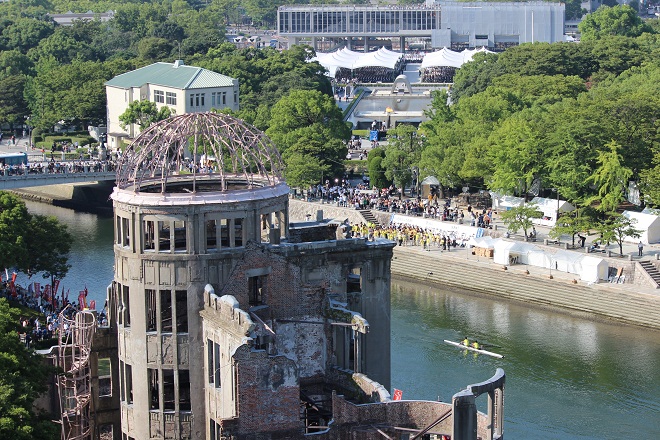Hiroshima to Promote Peace through Tourism
August 7, 2018
Hiroshima- Hiroshima, the western Japan city devastated 73 years ago by the world's first atomic bombing, is planning a project that will help visitors think about peace by taking them to sites related to the tragedy.
While tourism involving sites from wars and disasters is often termed dark tourism, the city is calling the project "peace tourism."
"We want people to learn not only about the negative legacy (of the 1945 bombing) but also about how the city recovered," a city official explained.
The project is the fruit of discussions by a panel set up by the city in fiscal 2017 to study how to combine peace and tourism. Peace group representatives and people from the tourism industry took part in the panel.
Four routes involving a total of 53 sites will be made available under the project.
Among the sites will be bombed trees and elementary school buildings, sites for culture and arts themed on the bombing and the symbols of recovery such as the former Hiroshima municipal baseball stadium, which was used as the home field of the Hiroshima Toyo Carp professional baseball team, city officials said.
The city will set up a website to provide information on the sites, including the time needed for visits. An augmented reality system will be employed for information boards at the sites that so that visitors with smartphones can get information, in the form of images and texts, about how the bombing changed the locations.
At the Atomic Bomb Dome in the Peace Memorial Park, for example, visitors will be able to see pictures of the building, used to showcase products of Hiroshima Prefecture, before the bombing, as well as images of the inside of the Dome and also read about its history.
The city hopes to announce the four routes and open the website in October, the officials said.
The panel made a 120-point proposal to the city for the project, including the use of more guides, improved information boards and efforts to make the project known to the public.
On Aug. 6, 1945, the head of the panel, Hiroshi Harada, was exposed to radiation from the bomb at a point some 1.9 kilometers from ground zero. He was six.
After working as an employee of the city, Harada, 79, headed the Hiroshima Peace Memorial Museum for four years from 1993 and joined a drive with citizens that helped lead to the designation of the Dome as a UNESCO World Heritage site.
Harada said what the government does for peace needs to be done in cooperation with citizens. "I hope people who come to visit Hiroshima feel the city is seriously aspiring for peace," Harada said. Jiji Press
Latest Videos
- THE UNTOLD STORY EXPERT INSIGHTS INTO THE UKRAINE
- NEGOTIATING A NEW ORDER US RUSSIA TALKS ON UKRAIN
- Ukraine: A Pawn in the Geopolitical Game? Will Trump Intervene?
- US VP VANCE CRITICIZES EUROPEAN DEMOCRACIES AT MUNICH SECURITY CONFERENCE
- UNCOVERING THE WEB OF DECEIT: CIA INFILTRATION OF THE MEDIA
- SHIFTING SANDS: TULSI GABBARD’S CONFIRMATION AND THE EVOLVING GLOBAL LANDSCAPE
- FAUCI SCANDAL: A THREAT TO GLOBAL HEALTH AND DEMOCRACY






